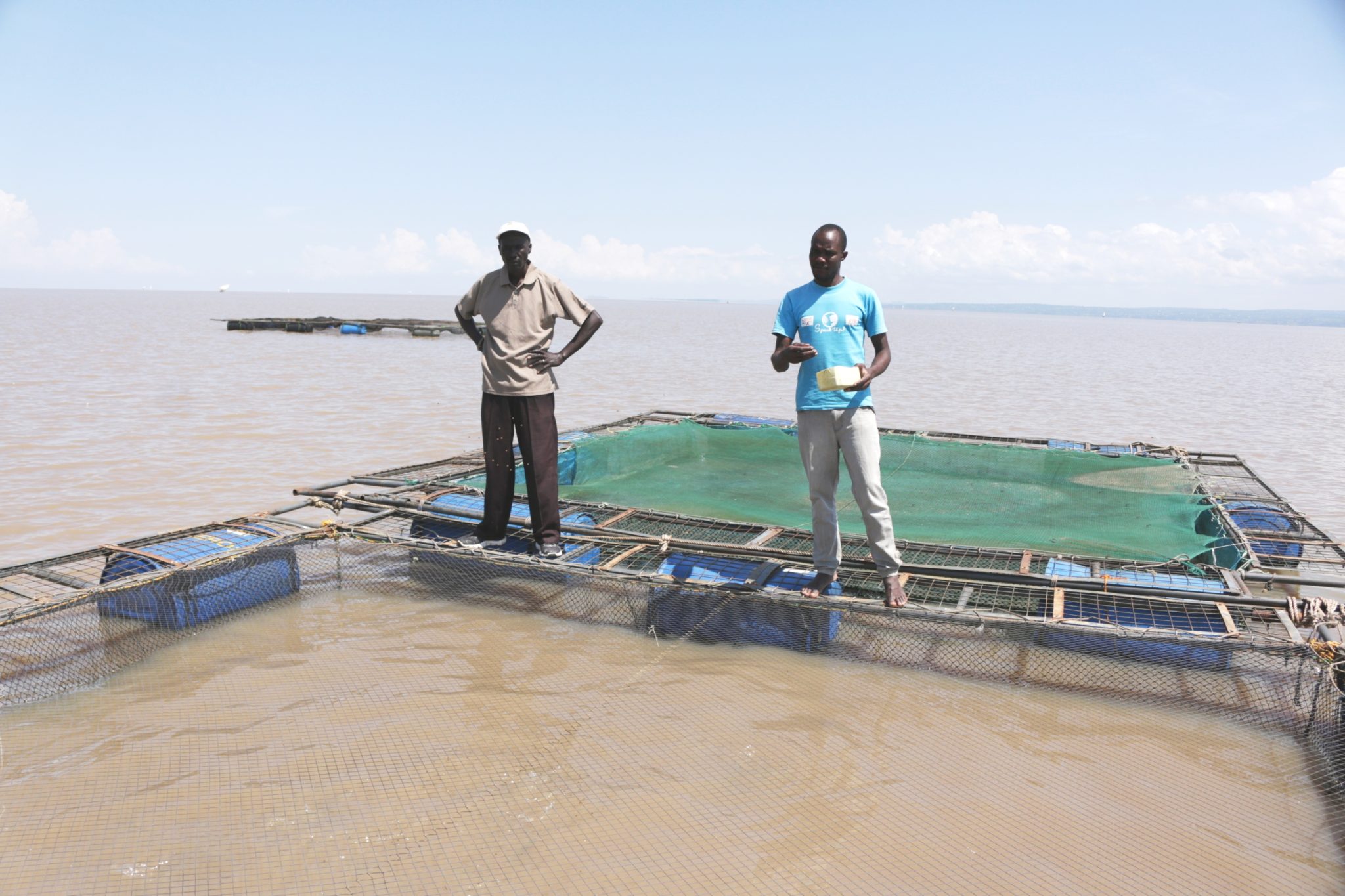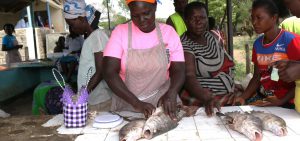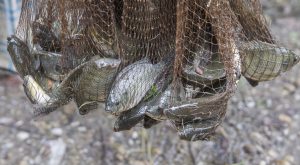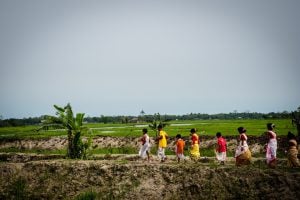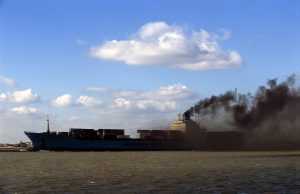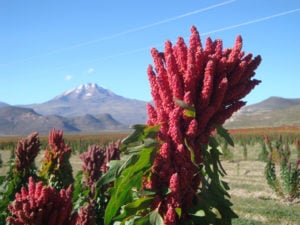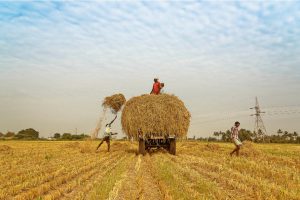Driving along the shores of Lake Victoria near Entebbe in Uganda, local leader Matia Lwanga Bwanika asked his driver to stop. Getting out of the car, he walked slowly into the swamplands by the lake and shook his head disapprovingly at the sight in front of him.
Fish farmers had dug up a big area of the once marshy papyrus wetland, turning it into a series of tightly packed rectangular ponds.
“This is wrong,” said Bwanika, who is the district chairperson for Wakiso and has made a name for himself as a protector of forests and wetlands. “They are literally destroying the entire wetland.”
The wetlands surround Lake Victoria, which at 68,800 square kilometres is Africa’s largest body of freshwater and drains into the Nile River. They are a natural filter for waste and chemicals, giving them an essential role in maintaining the lake as a functioning ecosystem.
“We cannot afford to continue doing this,” said Bwanika in reference to the new ponds. “We are exposing the lake to a lot of pollutants.”
He added that the digging also unsettles the thousands of organisms that inhabit the wetlands, damaging biodiversity.
This was December 2018 and Bwanika was leading a group of environment officers and local leaders to assess wetland degradation in his district, which borders the north shores of Lake Victoria near the Ugandan capital Kampala. He was keen to make them aware that these unregulated fish ponds are unsustainable.
But the farmers do not share Bwanika’s concerns. Demand for fish is growing, both domestically and globally. In Uganda, fish can currently be sold for more than 10,000 Ugandan shillings (US$2.60) per kilogramme. The farmers are doing good business, which means more and more of Lake Victoria’s wetlands are being dug up. They are even expanding their activities to other swamps across the country, especially in the districts of Mukono, Mpigi and Masaka.
The same thing is happening in Tanzania and Kenya, which share Lake Victoria with Uganda. Fish farmers have dug ponds around Mwanza in Tanzania, as well as near Dar-es-Salaam and the Ruvu River. And in Kenya, there is activity near Kisumu.
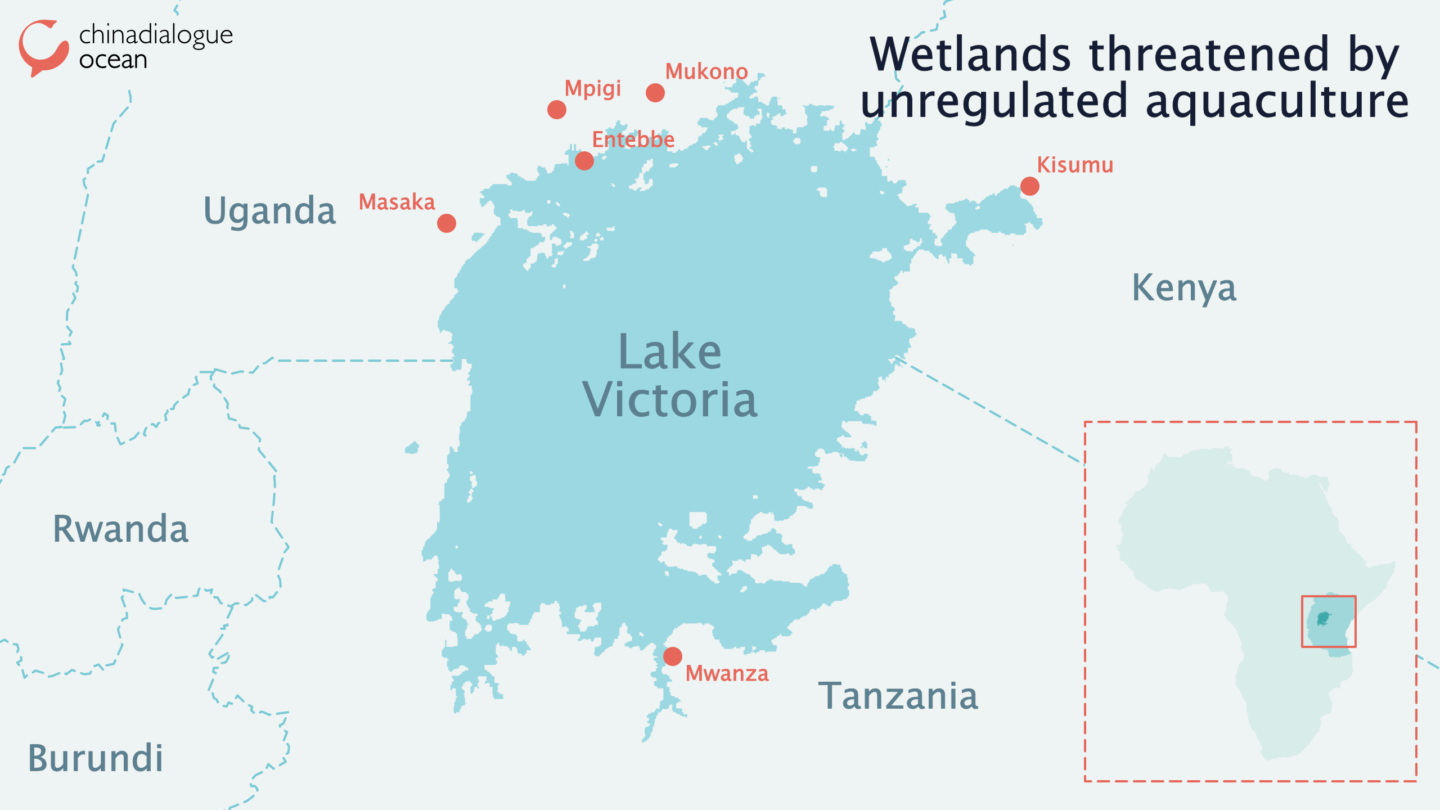
Ambitions for aquaculture
And it’s not just the farmers – the governments of Lake Victoria’s three nations are also targeting expanded aquaculture. Uganda currently produces 500,000 metric tonnes of fish per annum, much of which is caught wild in Lake Victoria. In its 2015/16 plan for the agriculture sector, it set a production target of 1.7 million metric tonnes of fish by 2020. Although this is unlikely to be met, it shows the country’s ambitions. Similarly, Kenya and Tanzania currently produce about 200,000 metric tonnes each, and are aiming for the one million metric tonne mark.
Aquaculture is a relatively new industry in this part of Africa. Its growth is in response to a surge in the demand for fish, an economical and increasingly popular source of protein for the region’s rapidly expanding population. This has led to overfishing and the depletion of wild species such as the African catfish and the Nile tilapia.
According to Jessy Lugya of Uganda’s National Fisheries Resources Research Institute (NaFIRRI), the authorities are looking to meet their fish production target by constructing aquaculture parks. The Ministry of Agriculture, Animal Industry and Fisheries has already completed initial plans and is now deciding on locations for the parks, where it will construct ponds to farm what Lugya called “quality fish”.
Lugya explained the government looks at aquaculture as an industry that can improve livelihoods in Uganda and help the country move towards middle-income status.
Kenya rolled out its programme to improve aquaculture and support fish farmers in 2009. In that year, the authorities mapped out what they called “suitable sites” for fish farming in the highlands, the central and Rift Valley provinces as well as along the coastline.
According to Dr Emmanuel Mbaru of the Kenyan Marine and Fisheries Research Institute, since then the total area covered by aquaculture has expanded from 220 to 500 hectares.
Kenya currently harvests 14,952 metric tonnes of fish from aquaculture in both fresh and salt waters. “We want to more than double this,” said Mbaru.
One of the reasons for this is that Kenya currently imports 5,900 metric tonnes of fish per annum, most of it frozen tilapia from China, according to Mbaru. He argued it would be more sustainable if Kenya could produce what it needs internally or import from neighbouring countries.
Uganda’s Lugya said the official support for aquaculture mainly aims to meet the growing local demand and “harmonize fishing activities to stamp out overfishing”. By reducing the need to import fish, it also lessens the risk of introducing the dangerous tilapia lake virus reported in Egypt, Thailand and Colombia.

Challenges ahead
But expanding aquaculture has many implications, especially for the environment, and both Mbaru and Lugya called for caution.
He said this was already visible on Lake Victoria, where there are 4,000 cages on the Kenyan side alone. “These are too many if you add the number of cages in Uganda and Tanzania,” he warned.
Across East Africa, the aquaculture sector also faces challenges relating to the quality of fish feed, most of which is imported, as well as poor systems for handling fish once harvested and the lack of adequate infrastructure to deal with disease.
The expense of setting up properly managed fish farms is also a major problem. According to Dr Edward Lukunya, Uganda’s commissioner for fisheries, this is “the main reason some of the farmers are running to wetlands” – digging a pond in a swamp does not require farmers to invest in pumps or pay for water supply.
A sustainable future?
According to Lukunya, Uganda is committed to protecting the environment in its drive to develop aquaculture.
The National Environmental Management Authority (NEMA) will conduct environmental impact assessments of the planned aquaculture parks. “We shall be careful and first look at the dos and don’ts of such an investment,” he said, promising not to go ahead if NEMA advises against it.
Regarding the unregulated ponds on the shores of Lake Victoria, Lukunya claimed that “very soon” only those with permits will be allowed to continue farming there. “We have to use wetlands sustainably,” he said.
Cooperation with Tanzania and Kenya has also been improved. Through the Lake Victoria Fisheries Organization, the three countries have developed an East African Community fisheries and aquaculture policy. This will help promote the sustainable use of the lake for aquaculture as well as better wild fishing practices.
And to further promote aquaculture, scientists in the region have been developing faster-maturing varieties of fish. Last month, researchers from NaFIRRI introduced a new fish variety: the NARO-tilapia. Compared to Lake Victoria’s native species of tilapia, which take about eight months to mature, this variety is ready to harvest in six months and has more flesh.
The Ugandan government hopes that, with support like this, aquaculture will be able to bridge the gap between production and demand, lessening the overreliance on wild fish. According to Lukunya, the aim is to see “how aquaculture can supplement wild fishing and then replace it as the main source of fish in Uganda and the region.”
